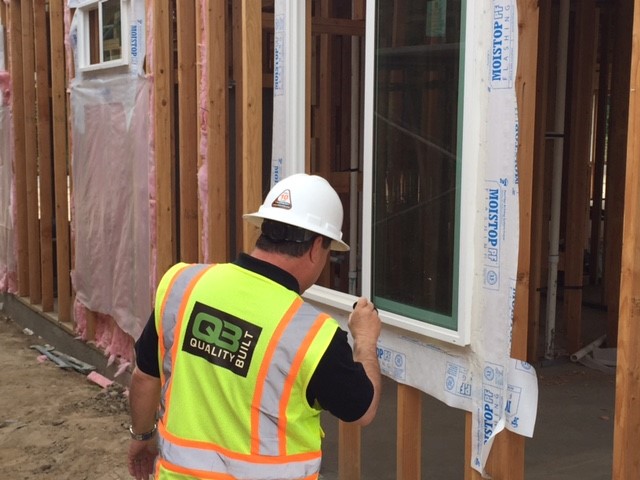By: Jeff Hoch, Principal Architect
There are many systems where a builder anticipates that a manufacturer’s warranty is in place to help with the cost of repairs if a failure occurs. Unfortunately, not understanding the warranty can often lead to installations which inevitably void warranties. This applies to various products, such as decking, roofing, waterproofing, cladding materials, and windows. By not verifying that an installation complies with the manufacturer’s instructions, the builder increases the risk that the warranty will be voided.
Deck Coatings
As an example, most deck coatings must be installed over plywood. Installation over OSB will void the warranty. While most builders are aware of this when a cementitious membrane is being applied, they may not be aware of the requirements for other products. Recently, a builder was installing a PVC vinyl deck coating and the structural engineer had called out an OSB sheathing for the deck. Review of the manufacturer’s documents indicated that the product required a plywood or solid lumber substrate, and that installation over OSB would void the warranty. Unfortunately, by the time the issue came to light, the framer who was following the structural plans had sheathed the decks with OSB. If this had not been caught before the deck coating was installed the warranty would have been voided.
Composite Siding
Installation practices which often void warranties on composite siding products, include a failure to properly treat cut ends and/or properly fasten the product. A lesser-known installation issue is related to the gap between the ends of planks. Most installers are not aware that gaps may need to vary depending on the temperature at the time of installation, as concrete siding expands and contracts. James Hardie provides the equation for calculating the amount of expansion for their product on their website, and the architect or installer must determine the gap allowance. Failure to allow the correct gap may cause planks to take on a wavy appearance, which is not covered by the warranty. Related damage is also not covered.
Windows
The latest issue to arise is related to window installations. Several window manufacturers are referring to the AAMA installation guidelines which require the installation of a sealant joint between cladding and the window frame. Other manufacturers are specifically including this sealant joint in their installation guidelines. Yet many builders are unaware of this requirement and the joint is not being installed. We recently heard a rumor that a manufacturer is using the lack of the sealant joint as a reason to void their warranty on a project that is having problems related to the window installation.
Because these are new requirements, installers are generally unaware that it is expected of them. Additionally, there is significant confusion regarding which trade is responsible for installing the sealant joint. Builders assume the window installer is responsible; however, their scope of work for this trade rarely includes this item. We believe the most logical trade would be the cladding installer. However, as a sealant joint between the cladding and the window frame is not industry standard for some cladding types, these trades may not be aware of the requirement. The builder generally has not included this task in the scope of work for the cladding trade when the industry standard does not include it. This is especially true for regions where the typical cladding includes stucco (exterior cement plaster). This is further complicated when the window manufacturer produces a frame that includes a stucco key which would appear to negate the requirement for a sealant joint since the frame is designed for the stucco to terminate behind a flange of the frame. If the warranty is predicated on following the installation instructions and those instructions require a sealant joint, then the warranty could be voided if no sealant joint is installed.
What Steps Can You Take?
As a part of a Technical Plan ReviewTM, many of these issues can be addressed by reviewing the manufacturer’s warranty and installation documents and then inspecting the installation to confirm that it is per these documents. If you elect to not have a Technical Plan Review, you can still have the installation requirements reviewed as a part of our QA Services. Simply make us aware of the manufacturer and product specified for installation at the time of Template (Checklist) creation. With this information, QB can customize a Checkpoint Template specific to the particular product.
The other important step is to have clear and complete Scopes of Work (SOW) for the trades which indicate the various tasks each trade is responsible for. By assigning the responsibility for these tasks, such as the sealant joint between the cladding and the window frame, you make the trade aware they are responsible for that specific task. If they fail to perform the task you avoid the dispute over it not being a part of their Scope, as well as any possible request for payment for additional services. Quality Built offers Scope of Work reviews which can help ensure that your SOWs are clear and complete and reflect the specified products as well to help keep a warranty intact. Keeping the warranty intact not only reduces the potential cost of a failure to the builder, but inherently reduces the risk of a failure by ensuring that product is installed per the manufacturer’s instructions/guidelines and should perform as intended.
About the Author
Jeff Hoch, Principal Architect
Jeff is a licensed architect and has been involved in the construction industry for over 27 years. He has a passion for safety and strives to educate the industry about building best practices and risk mitigation techniques. Jeff is constantly taking part in educational seminars and is extremely knowledgeable when it comes to building code requirements. Jeff performs inspections across the nation and specializes in forensic inspections, AAMA/ASTM water testing, technical peer plan reviews, quality assurance, and much more. He also is extremely experienced with design standards, local ordinances, forensic building failure analysis, and construction defects. You can reach Jeff at [email protected].




